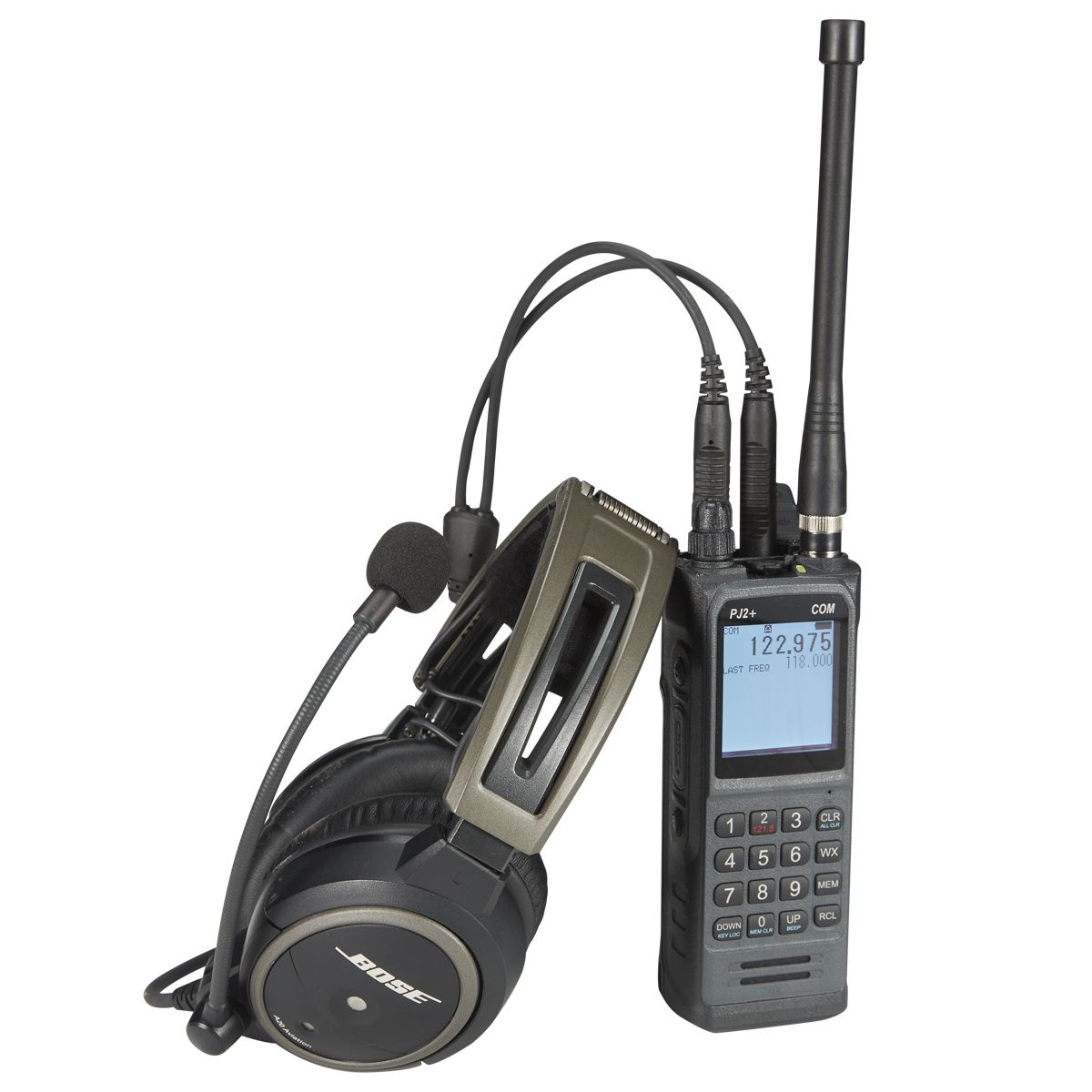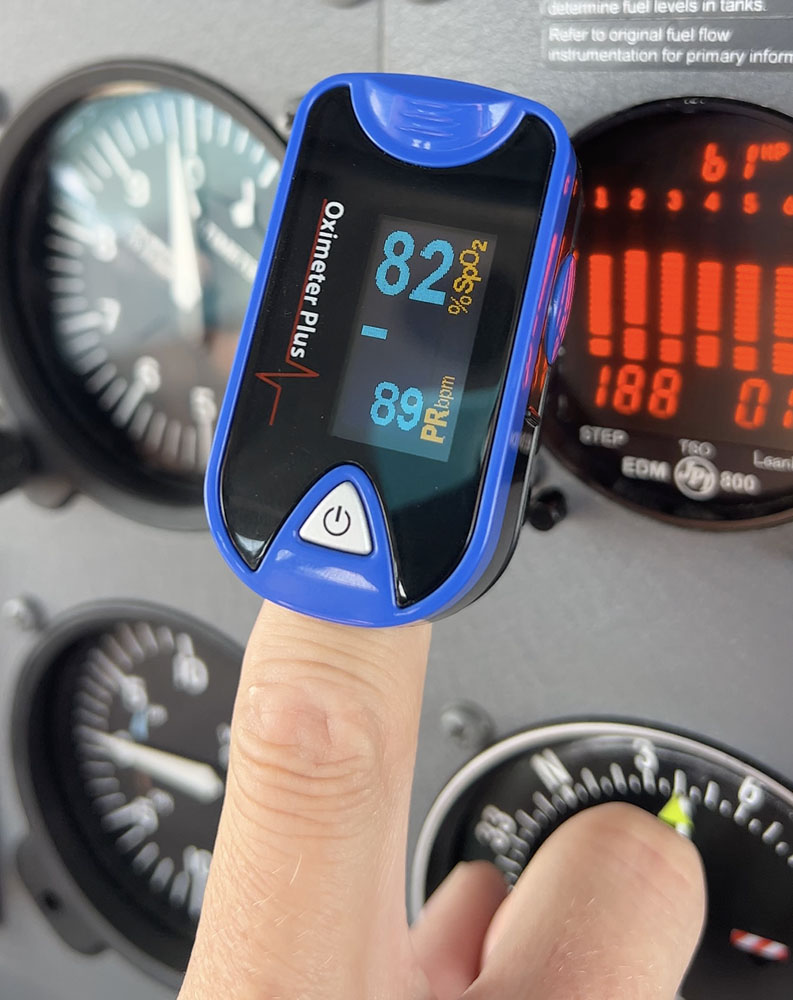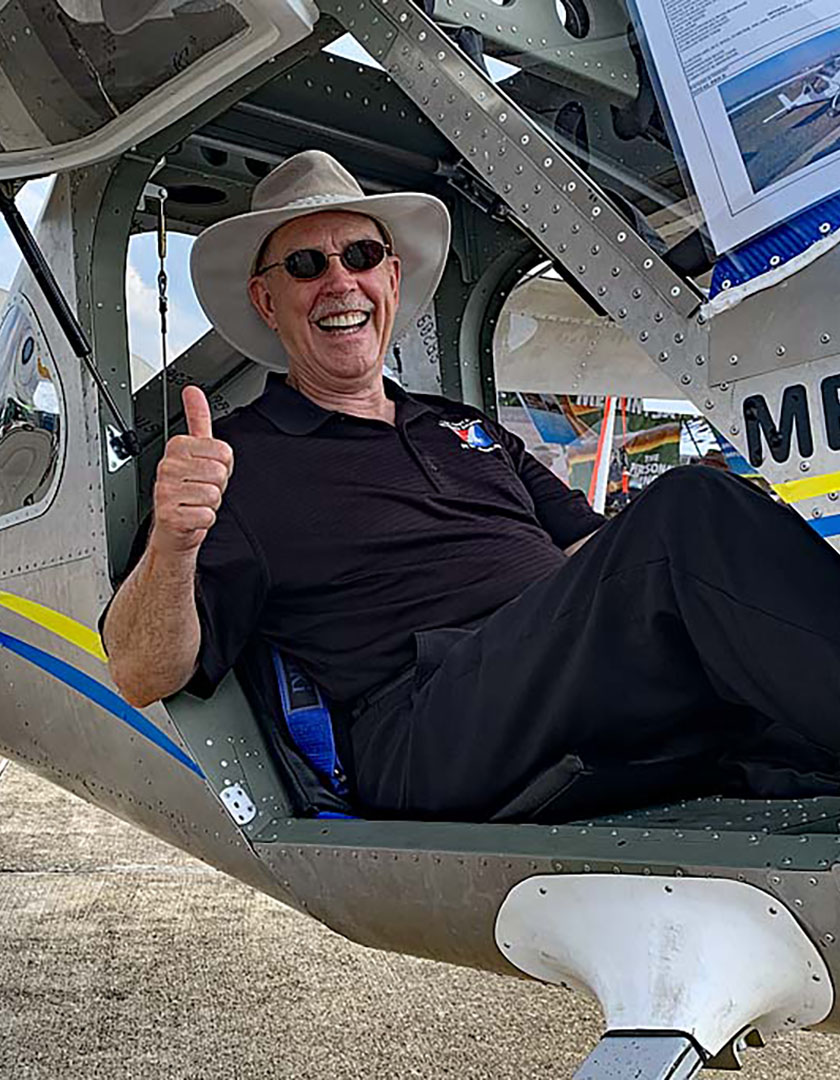In part one of this blog series, we explored what the new Microsoft Flight Simulator is all about and how to get started. If you haven't read that article yet, we suggest you start there. Assuming you've got the simulator up and running, and you're proficient in planning a flight, the question naturally comes up: what do you do with it? In this article, we'll cover some scenarios to try, from fun flights to VFR maneuvers to instrument procedures and even emergencies.
We'll start with the fun. Here are six fun flights I would execute if I won the lottery tomorrow:
- Recreating Lindbergh’s transatlantic flight - I’d recommend a much faster bird than the Spirit of St. Louis so it doesn’t demand 33 hours of your time like it did his, but still a fun flight to recreate.
- Fly the Australian coastline in the XCub - One of the latest updates improves the photogrammetry and digital detail of Aussieland. Have fun searching for Kangaroos along the golden coast.
- Practice Aerobatics in an Extra 330LT - Head on down to St. Augustine, Florida, where Patty Wagstaff offers aerobatic training and practice a Split S or a Hammerhead.
- Flight to Devil Hills/Kitty Hawk - Touch down at the mecca of aviation where the Wright brothers opened the door to powered flight. Plan an approach from the south and take in the Outer Banks.
- Appreciate the African savannah from 1,000 or less AGL - I highly doubt that giraffes will be rendered in the game, but I can assure that there will be some beautiful sunsets from that continent.
- Explore Donegal Bay Ireland - Family legend has it that my ancestors hail from the northwestern part of Ireland known as Donegal Bay. Would be fun to fly around in the summertime when the grass is the greenest.
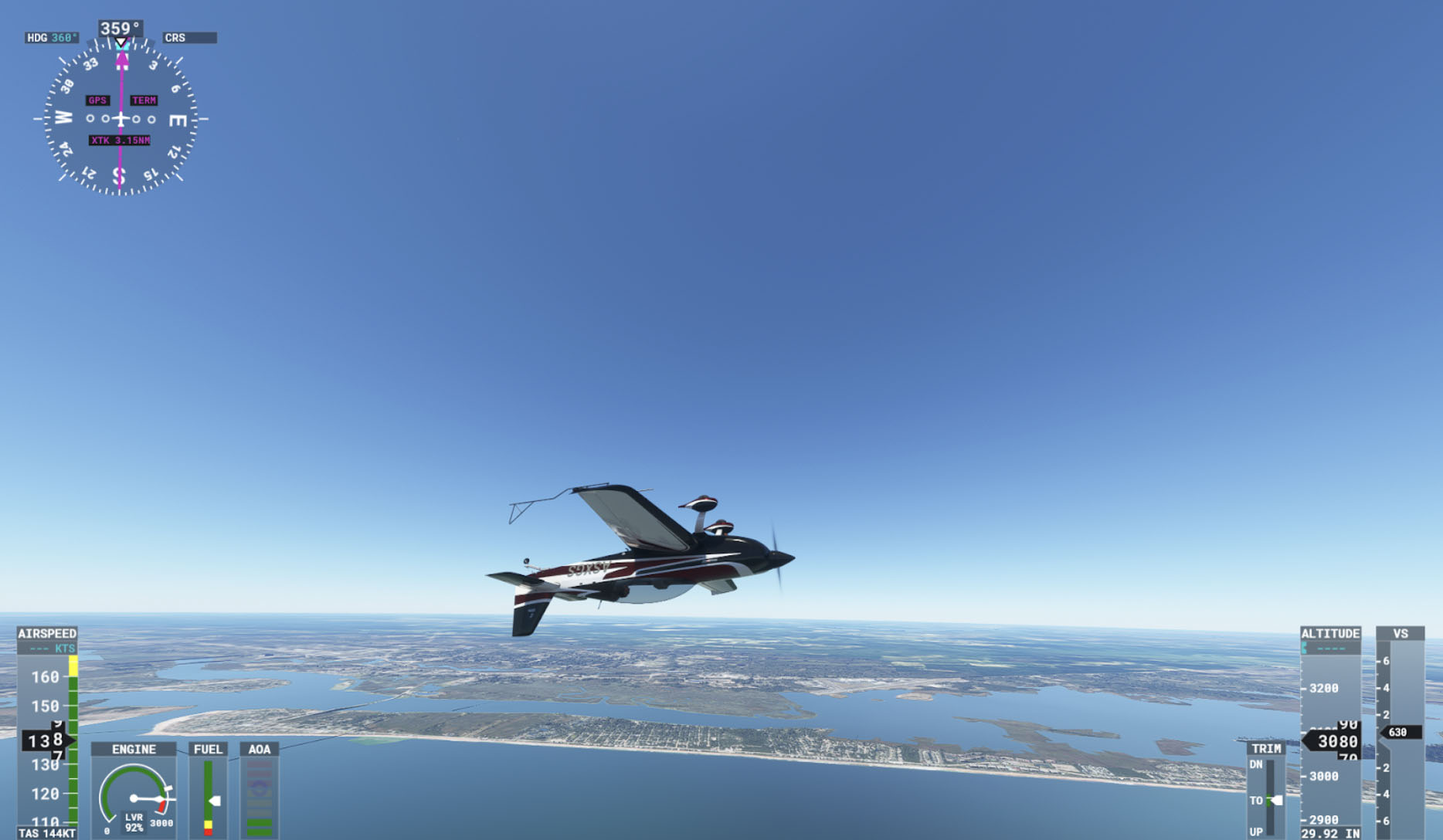
We’ve taken in the sights and re-created some of the world’s most historic flights, but what if we want to utilize the physics programmed into this system? Let’s try some VFR maneuvers.
- Power-on stalls - During flight training, these used to guarantee I would have a sweaty shirt during our debrief, but eventually they became fun. With a simulator teetering on the envelope, don’t be afraid to see what happens when you kick the rudder to full deflection in a power-on stall.
- Short-Field Takeoff and Climb - There’s a 50 foot building at the end of the runway. Are you able to rotate at 55 knots, utilize Vx, and transition smoothly to Vy?
- Rejected takeoff - This may seem like a boring maneuver to exercise in a simulator, but it’s one that will be appreciated in a real world scenario that demands it. Add a new challenge by repeatedly aborting the takeoff at continuously later stages to find the absolute limit of the airplane's braking performance.
- VFR into IMC - This maneuver is meant to give the VFR pilot a taste of what Instrument flying is like. It's very dangerous in the real world, nonetheless it’s a good maneuver to practice in a simulator by flying into a wall of overcast clouds and slowly flying a 180-degree turn while maintaining altitude and airspeed.
- S-Turns - Find that stretch of straight road or highway close to your departure point and practice S-Turns along it, keeping your wings parallel to the road when you cross over it. Additionally add a wind component perpendicular to the road and critique the leg changes.
- Takeoff and landing at a high density altitude airport - Once you have become accustomed to the takeoff roll in your simulated airplane of choice at a home airport in normal conditions, go take off from an airport with a high elevation. Or find one around 3,000 MSL and crank outside air temperature to 100 degrees and bring the barometric pressure down to 29.50. This will greatly reduce the performance of the engine and in turn lengthen your takeoff roll.
VFR maneuvers are fun, but we also want to try something challenging that demands precision and flight in instrument conditions. Following are six scenarios that we like to practice involving instrument flight.
- Zero/zero takeoff - I’ve never flown an actual 0/0 takeoff but I simulated over a dozen while training and I’ve flown about just as many in the simulator. This is a great challenge for rudder control on takeoff and also tracking desired heading once you’ve left the ground.
- Intercepting and tracking VOR radials - This maneuver is aimed towards precision in navigating, which is a requisite when flying IFR. A simulator is a great way to quickly test the sensitivity of intersecting a radial 30 miles out from the source, versus 5 miles out.
- Holding procedures parallel entry - Holding procedures can seem intimidating, if not antiquated in today’s airspace system. Attempt the challenging parallel entry off of two VOR radials. Try flying a timed hold rather than a distance-based hold for extra credit.
- ILS down to minimums - This is an IFR maneuver I try to fly once a week. If I ever find myself in a scenario where I need to land at an airport with weather just above minimums, I want to have this procedure down pat. For an added challenge, I’ll sometimes throw a crosswind in once three miles out to keep my scan inside the plane from getting fixated, while also searching for those lights outside the plane.
- Missed Approach Procedure - Practice that maneuver where you’ve hit your minimum altitude and can’t make out the runway. We cover the missed approach procedure during our briefings but how often do we practice a go around when with no visual cues to the ground?
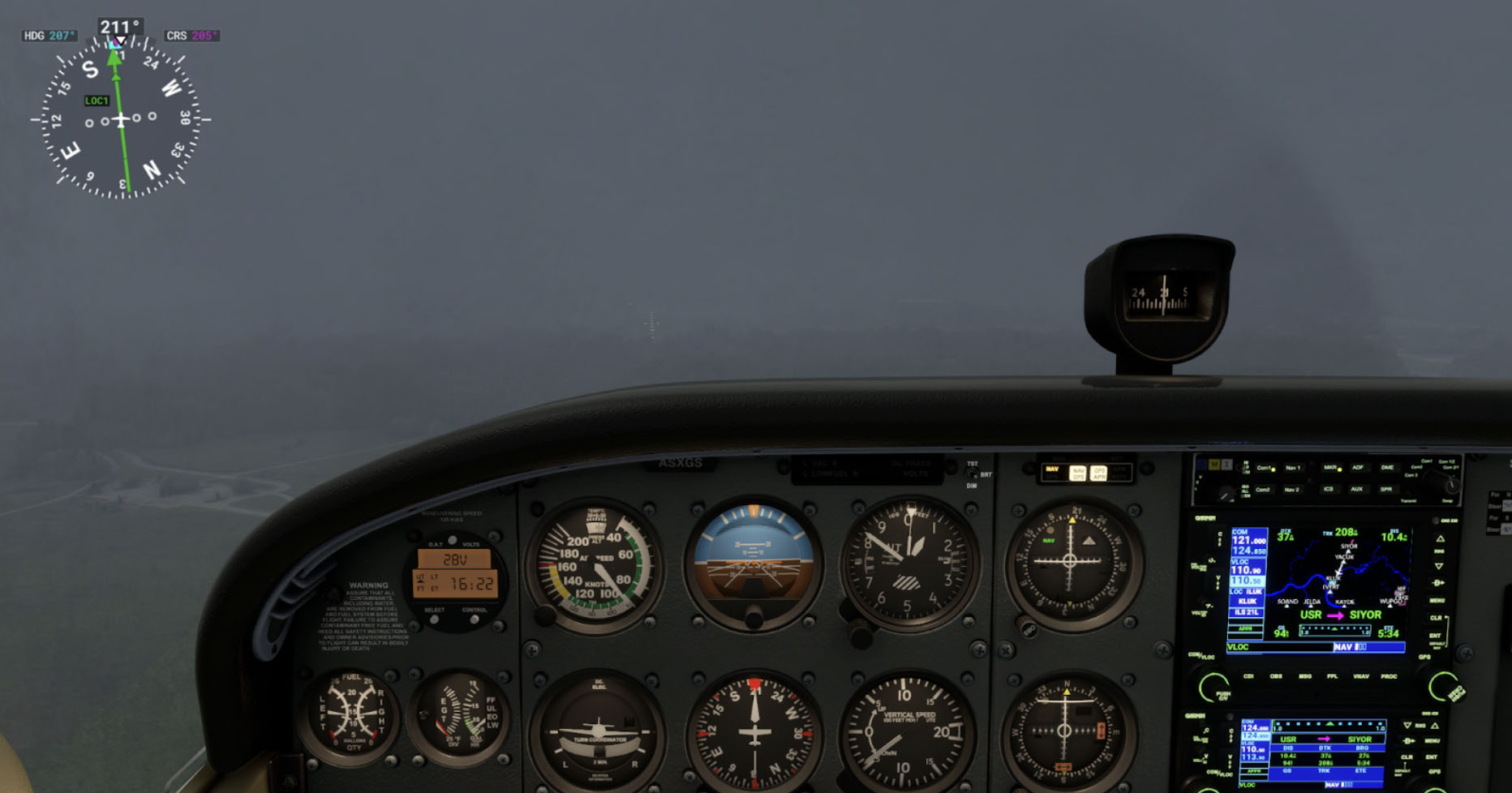
Now we’ve covered some VFR and IFR maneuvers in addition to fun scenarios, but if you still want to turn up the heat, let’s discuss emergencies. I’d like to pause a second and explain the different approach I take when it comes to training for emergencies. All the scenarios previously discussed are things we can look forward to flying in the airplane or in the digital world. When it comes to emergencies, we train for these so that if we ever experience one, we are properly prepared for it. If you are a pilot and want to use a simulator to strengthen emergency flows, I can’t stress enough the value of chair flying and learning the concrete flows before jumping into a digital simulator. Once consistency and confidence is reached in these simulated emergencies, then we can utilize the simulator to analyze the results of our inputs in these critical phases of flight.
- Emergency approach and landing - The emergency approach and landing is the most probable emergency we will see as aviators. Pull the engine’s power when abeam the numbers in the pattern, and get a better understanding of your bird's best glide speed.
- Engine failure during climb out - While we can practice an emergency approach and landing in real training, we should save the engine failure during climb out maneuver for the simulator. What to do in this scenario should be covered in every departure briefing but here we are actually able to test what would happen to the airplane and what our sight picture would be. Try neutralizing the engine at 200 feet AGL, then 400, then 600, then 800. Try killing the engine at pattern altitude and see if you have the maneuverability to make the 180-degree turn back to the runway. Now run that same cycle and throw a 12 knot direct crosswind into the mix…
- Fuel Starvation in Cruise - Whether it was poor planning, a faulty fuel indicator, or a missing tank cap (looking at you Martha), an engine running out of fuel is a bad day. You’ll have a new appreciation for those higher cruising altitudes and the margin of error they provide.
- Emergency descents - These are a very fun maneuver in real life and in the flight simulator. They simulate if we have an emergency with a passenger and need to land at an airport beneath us while in cruise. It’s a great test of airspeed control and creates a sight picture that is very rare in flying.
- Attitude Indicator Failure - One of the most used flight instruments is the attitude indicator in a steam gauge aircraft. You’ll quickly realize the value that an instrument cover provides when this indicator starts giving erroneous indications compared to your other gauges.
- IFR flight with pitot blockage - This may be one of the most dangerous emergencies in my eyes. When you lose an engine whether in VFR or IFR, you know it from the loss of noise. When the electrical system goes out, it’s glaringly obvious. When the pitot port is blocked, it’s difficult to diagnose because you have other instruments providing information that can counter what the airspeed indicator is telling you. I’ve spoken to a few pilots who’ve experienced this condition and while they were appreciative of their training, they’re glad the numbers say they’ll never experience that again.
To say the least, the 2020 Microsoft Flight Simulator program is a beautiful and richly designed product. For many it will be a game, for some it will be a training tool. When pilots pack for their next flight, there’s usually an objective to accomplish, whether it’s taking the family to a new vacation destination, traveling to a new airport to try the local cuisine, or flying to a familiar stomping ground to tell lies in a hangar. Microsoft may not be able to accomplish either of those previously mentioned objectives, but they will offer the ability to explore our diverse world in a never before available clarity, and offer a unique training tool along the way.
Shop all flight simulator gear >>
Watch our YouTube video series on flight simulators >>
Learn how to set up different flight simulator controls >>
Learn more at Flight Sim Update, our free website packed with tips, videos, and product reviews: https://flightsimupdate.com/




